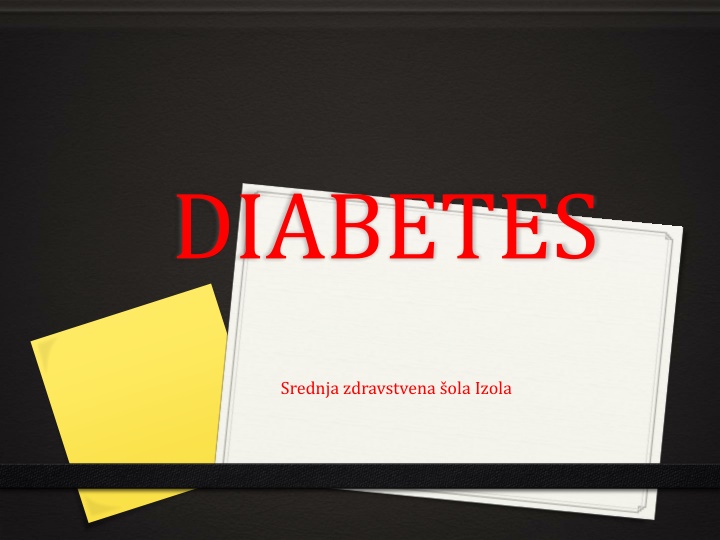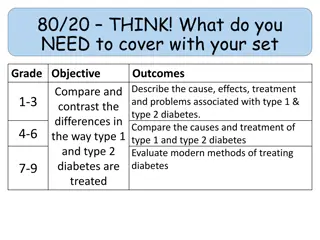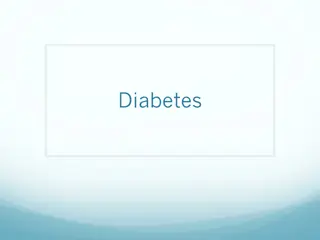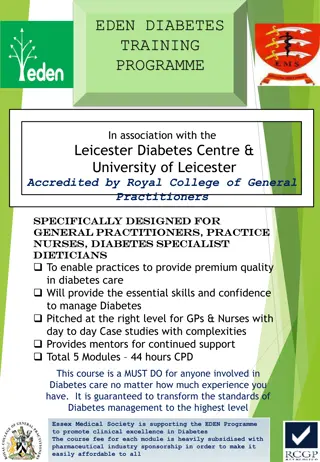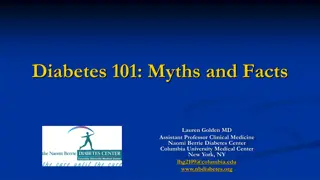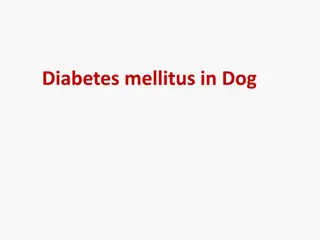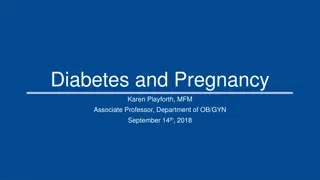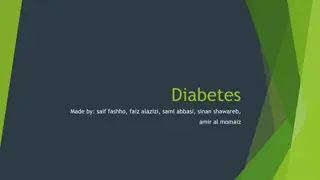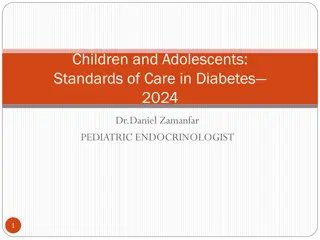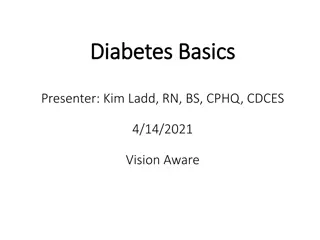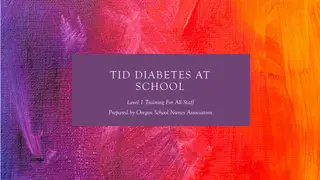Diabetes: Types, Symptoms, and Causes
Diabetes is a chronic condition characterized by high sugar levels in the blood. There are two main types - Type 1 and Type 2, each with distinct characteristics, symptoms, and causes. Insulin plays a crucial role in regulating blood glucose levels. Learn more about diabetes to better manage the condition.
Download Presentation

Please find below an Image/Link to download the presentation.
The content on the website is provided AS IS for your information and personal use only. It may not be sold, licensed, or shared on other websites without obtaining consent from the author.If you encounter any issues during the download, it is possible that the publisher has removed the file from their server.
You are allowed to download the files provided on this website for personal or commercial use, subject to the condition that they are used lawfully. All files are the property of their respective owners.
The content on the website is provided AS IS for your information and personal use only. It may not be sold, licensed, or shared on other websites without obtaining consent from the author.
E N D
Presentation Transcript
DIABETES Srednja zdravstvena ola Izola
0What is Diabetes? Diabetes is a chronic condition associated with abnormally high levels of sugar (glucose) in the blood. Diabetes mellitus is a group of metabolic diseases
0What is glucose? Is a simple sugar found in food. is an essential nutrient that provides energy for the proper functioning of the body cells
What is insulin? -Insulin is a hormone that is produced by specialized cells (beta cells) of the pancreas. Insulin helps glucose enter the cells, insulin is also important in tightly regulating the level of glucose in the blood
0What causes diabetes? Insufficient production of insulin (either absolutely or relative to the body's needs), Problem in type 1 inability of cells to use insulin properly and efficiently. ( This is the primary problem in type 2 )
DIABETES TYPE 1 DIABETES TYPE 2
There are two types of diabetes: DIABETES TYPE I DIABETES TYPE 2
DIABETES TYPE 1 Type 1 diabetes is usually recognized in childhood or early adolescence, often in association with an illness (such as a virus or urinary tract infection) or injury.
Symptoms: polyuria (frequent urination), polydipsia (increased thirst) and polyphagia (increased hunger).
DIABETES TYPE 2 Type 2 diabetes is the most common form of diabetes.Affects older In type 2 diabetes, either the body does not produce enough insulin or the cells ignore the insulin
Symptoms: high amounts of glucose in the urine, which leads to dehydration and causes increased thirst and water consumption; weight loss despite an increase in appetite; bladder, skin, and vaginal infections; blurred vision; and fatigue; nausea; vomiting;
DIAGNOSIS: 0 Diabetes is diagnosed by blood sugar (glucose) testing. 0 Normal values: 0 3,5 mmol/l 5,6 mmol/l
Deviation from normal values: 0 Hypoglycemia: Is the medical term for a state produced by a lower than normal level of blood glucose. 0 Hyperglycemia: Hyperglycemia, or high blood sugar, is a condition in which an excessive amount of glucose circulates in the blood plasma.
Complications of diabetes are acute and chronic: 0 ACUTE: dangerously elevated blood sugar, abnormally low blood sugar due to diabetes medications may occur. 0 CHRONIC: disease of the blood vessels (both small and large) which can damage the eye, kidneys, nerves, and heart may occur
